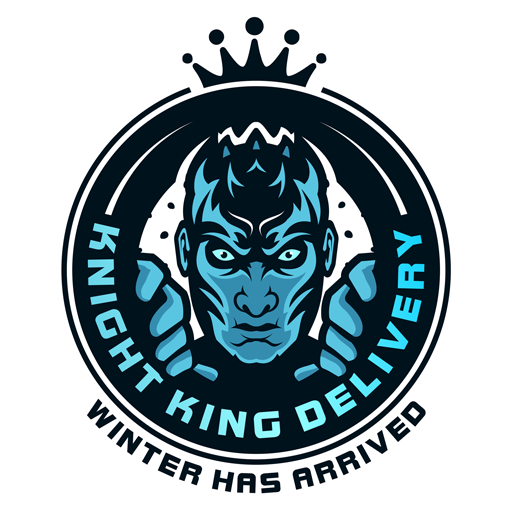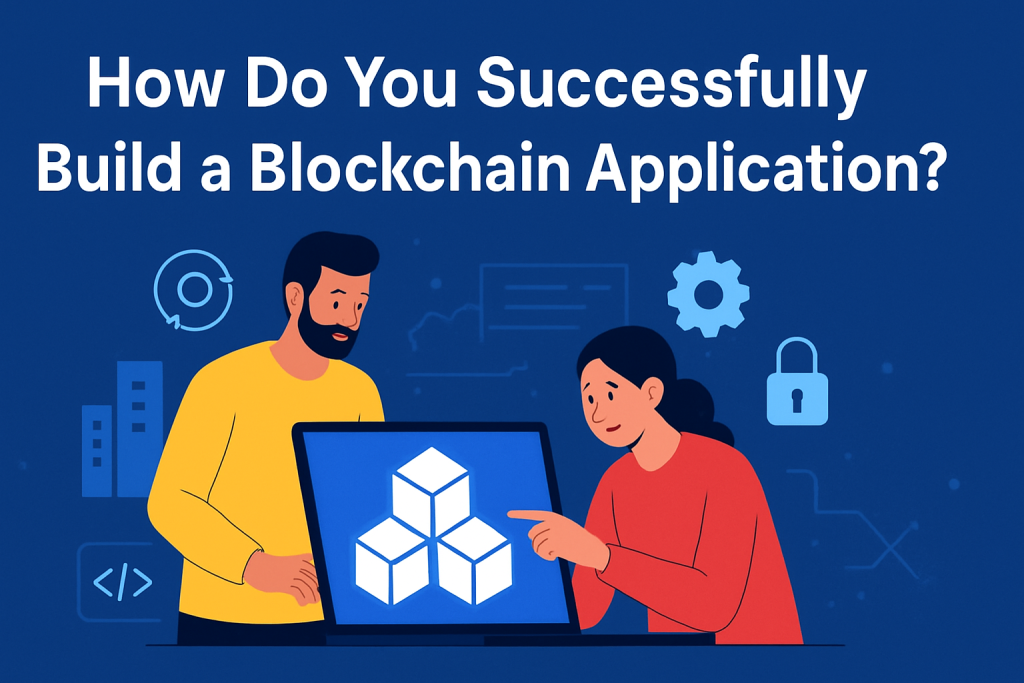The creation of a decentralized application (dApp) marks a significant step toward systems built on trust, transparency, and automation. A successful blockchain application moves beyond merely digitizing a process; it fundamentally redesigns workflows by removing central points of control and replacing them with self-executing logic. To build a robust and functional dApp, you must navigate a multi-stage process that balances innovative decentralized architecture with practical software engineering discipline.
This blog provides a blueprint, outlining the active steps you must take, from initial concept validation to secure deployment and scaling, ensuring your blockchain app development project achieves market viability and technical resilience.
Stage 1: Validate the Problem and Define the Scope
You do not build a blockchain application development services because the technology is new; you build it because the technology is necessary. The initial stage centers on validating the business case and defining precisely where decentralization adds superior value.
Identify the Core Use Case
Start by pinpointing a specific, tangible problem. You must ask: Does this problem inherently require a shared, immutable ledger?
The most compelling use cases for dApps typically involve:
- Need for Verifiable Provenance: Tracking assets (physical or digital) where trust among multiple parties is low (e.g., supply chain).
- Removal of Intermediaries: Automating agreements where a trusted third party currently takes a fee or creates a bottleneck (e.g., lending or escrow).
- Data Integrity and Censorship Resistance: Storing critical records that must remain unaltered and accessible, regardless of a single entity’s actions (e.g., voting systems or identity management).
If a simple database can solve the problem cheaper, faster, and more efficiently, do not use blockchain. Focus on a high-value problem that cryptographic truth solves best.
Gather Requirements and Plan Viability
Once you confirm the problem fits the technology, you must establish detailed requirements. These include:
- Functional Requirements: What must the dApp do? (e.g., “Allow users to issue a token,” “Process a transaction in under five seconds.”)
- Non-Functional Requirements: How must the dApp perform? (e.g., “Maintain 99.9% uptime,” “Handle 500 transactions per second (TPS).”)
Perform a feasibility study. This involves assessing the technical practicality of your idea with current blockchain platforms and creating a clear financial model. Accurately estimate the resources—time, budget, and talent—required for development, testing, and infrastructure
Stage 2: Architect the System and Select the Platform
The architecture forms the foundation of your dApp, connecting the frontend user experience to the decentralized backend logic. The choice of platform dictates the programming language, security model, and transaction blockchain development costs your users will face.
Choose the Blockchain Network Type
Select the network that aligns with your application’s governance and privacy needs:
| Type | Access | Primary Goal | Example Platforms | Ideal Use Case |
| Public (Permissionless) | Anyone can join and validate. | Maximum decentralization, transparency. | Ethereum, Solana, Avalanche, Polygon | DeFi, Public NFTs, DAOs |
| Private (Permissioned) | Restricted access, controlled by one entity. | High speed, controlled access, privacy. | Hyperledger Fabric, R3 Corda | Internal supply chain, inter-bank settlement |
| Consortium | Controlled by a group of pre-approved entities. | Balance of trust and efficiency. | Quorum | Cross-organizational data sharing |
For most public-facing dApps, you select an EVM-compatible chain (like Ethereum, Polygon, or Avalanche C-Chain) for its large ecosystem and established tools.
Design the Architecture Layers
You structure your dApp into three interacting components:
- The Ledger Layer (The Smart Contracts): This is the decentralized business logic, typically written in Solidity or Rust. It resides entirely on the blockchain, storing state and executing core functions.
- The Data & Middleware Layer: This includes external services that cannot, or should not, live on the blockchain. You use off-chain databases (like MongoDB or PostgreSQL) for heavy data (user profiles, media, metadata) and Oracles (like Chainlink) to feed verified, real-world information into your smart contracts.
- The Client Layer (Frontend): This is the user interface built using standard web stacks (React, Vue, Node.js). It interacts with the blockchain through specialized libraries.
Stage 3: Develop Secure Smart Contracts
Smart contracts execute the logic of your dApp automatically. Their immutable nature means you must achieve absolute security and efficiency before deployment.
Write Code with Security in Mind
You write your smart contracts using established standards (like ERC-20 for tokens or ERC-721 for NFTs). Since the code is publicly viewable and immutable, every line is a potential attack vector.
Actively mitigate risks during the coding process:
- Use Tools: Employ integrated development environments (IDEs) like Hardhat or Foundry. These tools provide structure, local network simulation (Ganache), and built-in testing capabilities using frameworks like Mocha and Chai.
- Prioritize Efficiency: Smart contract execution costs gas (a network fee). Write functions that use minimal computational resources to keep user transaction fees low. Optimize storage usage, as storing data on-chain is expensive.
- Guard Against Attacks: Implement checks and balances against known vulnerabilities, such as reentrancy (where a malicious contract repeatedly calls a function before the initial transaction is finalized) and integer overflow/underflow.
Run Extensive Audits and Testing
Testing is non-negotiable. It occurs in three phases:
- Unit and Integration Testing: You write tests in languages like JavaScript or Python to verify every function of the smart contract works in isolation (unit) and with other components (integration).
- Automated Security Analysis: Use static analysis tools like Slither or MythX. These tools scan the Solidity code automatically, identifying common vulnerabilities without executing the code.
- Formal Security Audit: Hire a reputable, third-party auditing firm. They perform a deep, manual review of the codebase, focusing on security assumptions and economic attack vectors. Never deploy to a public network without a formal audit certificate.
Stage 4: Connect the User Interface
A dApp is useless if users cannot interact with it easily. You must build a bridge between the user’s web browser and the cryptographic complexity of the blockchain.
Integrate the Web3 Library
The frontend needs a Web3 library to communicate with the blockchain nodes. Ethers.js or Wagmi (for React applications) are the modern, favored choices over the older Web3.js. These libraries handle:
- Wallet Connection: Recognizing and connecting to a user’s cryptocurrency wallet (e.g., MetaMask, WalletConnect).
- Contract Interaction: Translating user actions (like clicking a “Deposit” button) into formatted transaction calls for the smart contract.
- Data Reading: Querying the blockchain to fetch the user’s token balance, historical transactions, or the current state of the dApp.
Design for Decentralized Identity
You must design the user flow around self-custody. Users sign transactions using their private keys via their wallets. The dApp cannot execute actions on the user’s behalf.
- Transaction Clarity: Clearly show users what they sign and what the transaction costs (gas fees) before they commit.
- Error Handling: Implement robust error messages that clearly explain why a transaction failed (e.g., “Insufficient funds,” “Contract execution reverted”).
Handle Data Storage
For large files (images, videos, documents) that are too expensive to store on-chain, integrate decentralized storage solutions like IPFS or Filecoin. Your smart contract only stores the cryptographic hash (unique ID) of the file, verifying the data’s integrity and existence without incurring massive storage costs.
Stage 5: Address Scalability and Deployment
Successful dApps attract high transaction volume, which can stress the underlying blockchain. You must plan for growth and execute a cautious deployment strategy.
Implement Scaling Solutions
If your dApp targets mass adoption, you must address the blockchain scalability challenge—the trade-off between decentralization, security, and speed (the Trilemma).
- Layer 2 (L2) Solutions: Use scaling solutions like Optimistic Rollups (Arbitrum, Optimism) or Zero-Knowledge Rollups (zk-Sync, Starknet). These platforms process transactions off-chain and submit a single, compressed proof to the main chain (Layer 1), drastically increasing TPS and reducing fees.
- Sharding: For Layer 1 networks like Ethereum, the implementation of sharding splits the network load across multiple parallel chains, improving throughput.
Execute the Deployment Pipeline
- Testnet Deployment: Deploy the final, audited smart contracts to a public Testnet (like Sepolia). This allows the team and a small group of beta users to test the dApp under real-network conditions using non-valuable test tokens.
- Mainnet Launch: Execute the final deployment to the production blockchain (Mainnet). This should involve a well-defined release strategy, often including a multi-signature wallet for critical administrative functions, providing an extra layer of security before the governance is fully decentralized.
- Monitoring: Set up real-time dashboards to track network health, gas usage, transaction speeds, and security metrics (e.g., node synchronization and contract event logs).
Establish Governance and Maintenance
A decentralized application requires decentralized maintenance. You establish a Decentralized Autonomous Organization (DAO) structure where users holding a governance token vote on future code changes, fee structures, or upgrades. This ensures that the application remains true to its decentralized principles, keeping control in the hands of the community and not a centralized founding team.
By following this active and security-focused development blueprint, you construct a resilient, user-centric blockchain application built to last in the evolving decentralized ecosystem.
Final Takeaway
Successfully building a blockchain application demands a decentralized mindset. You actively shift focus from centralized control to shared, self-governing systems. You must validate the core need for decentralization, choose the right scaling architecture (like Layer 2), and prioritize security auditing at every step. You do not just write code; you establish resilient, transparent protocols founded on trustless automation. This mastery positions your application to drive genuine innovation and put control directly into the hands of the user.







